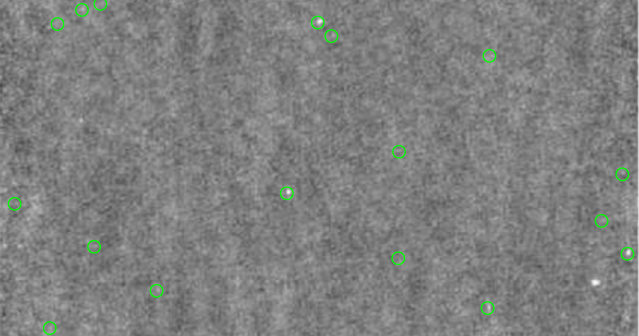Look closely. What do you see in the dead center of this 4° x 4° stacked radio image? If your answer is “not much”, you’re absolutely right — and that’s super interesting! The observations above were made by the Murchison Widefield Array (MWA) as it shadowed the pointings of the Australian Square Kilometre Array Pathfinder (ASKAP). During the time the two instruments synchronized their pointings, ASKAP detected several fast radio bursts — extremely energetic and brief flashes of radio emission — including one that should have appeared in the center of the MWA image above. But MWA spotted nothing but weak candidate sources (circled in green) that were later discarded.
Why did MWA turn up nothing? A primary difference between the arrays is that ASKAP scans at a higher radio frequency than MWA — 700 MHz to 1.8 GHz, compared to MWA’s 80 to 300 MHz. This null result in MWA’s observations therefore has important implications for understanding mysterious fast radio bursts: it means that either the bursts don’t emit below a certain radio frequency (which raises the question: why not?), or that something is blocking the lower-frequency radio signal on its way to Earth (which raises the question: what?). To learn more about the team’s findings, check out the article below.
Citation
“No Low-frequency Emission from Extremely Bright Fast Radio Bursts,” M. Sokolowski et al 2018 ApJL 867 L12. doi:10.3847/2041-8213/aae58d

1 Comment
Pingback: AAS Nova – New